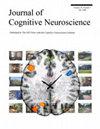经颅直流电刺激背外侧前额叶皮层可调节双任务情况下的自主任务顺序协调性
IF 3.1
3区 医学
Q2 NEUROSCIENCES
引用次数: 0
摘要
双重任务(DT)需要额外的控制过程来在时间上协调两个任务的处理过程。之前采用成像和非侵入性刺激技术进行的研究表明,背外侧前额叶皮层(dlPFC)与这些任务顺序协调过程有因果关系。然而,在这些研究中,参与者被要求在 DT 处理过程中使其处理顺序与外部提供的强制性顺序标准相匹配。因此,dlPFC 是否也会被招募用于自愿的顺序控制过程,这一点还不得而知,因为在允许有意和内部生成的顺序选择的情况下,这些过程是必需的。为了解决这个问题,我们在两个实验中,分别对随机顺序 DT 进行了阳极(实验 1)和阴极(实验 2)经颅直流电刺激,让参与者自由决定任务处理的顺序。在我们的研究结果中,我们发现阳极和阴极经颅直流电刺激分别对自主任务顺序协调产生了促进和抑制作用。这表现在,与假刺激相比,在阳极刺激时,参与者有意切换任务顺序与前一试验的相对时间更短,而在阴极刺激时,切换任务顺序与前一试验的相对时间更短。总之,这些发现表明,dlPFC 也因果地参与了自愿任务顺序协调过程。特别是,我们认为 dlPFC 被招募用于有意更新和执行任务顺序信息,而这些信息对于安排两个时间上重叠的任务的处理是必要的。本文章由计算机程序翻译,如有差异,请以英文原文为准。
Transcranial Direct Current Stimulation of the Dorsolateral Prefrontal Cortex Modulates Voluntary Task-order Coordination in Dual-task Situations
Dual tasks (DTs) require additional control processes that temporally coordinate the processing of the two component tasks. Previous studies employing imaging as well as noninvasive stimulation techniques have demonstrated that the dorsolateral prefrontal cortex (dlPFC) is causally involved in these task-order coordination processes. However, in these studies, participants were instructed to match their processing order to an externally provided and mandatory order criterion during DT processing. Hence, it is still unknown whether the dlPFC is also recruited for rather voluntary order control processes, which are required in situations that allow for intentional and internally generated order choices. To address this issue, in two experiments, we applied anodal (Experiment 1) and cathodal (Experiment 2) transcranial direct current stimulation during a random-order DT in which participants could freely decide about their order of task processing. In our results, we found facilitatory and inhibitory effects on voluntary task-order coordination because of anodal and cathodal transcranial direct current stimulation, respectively. This was indicated by shorter RTs when participants intentionally switched the task order relative to the preceding trial during anodal as well as a reduced tendency to switch the task order relative to the preceding trial during cathodal stimulation compared with the sham stimulation. Overall, these findings indicate that the dlPFC is also causally involved in voluntary task-order coordination processes. In particular, we argue that the dlPFC is recruited for intentionally updating and implementing task-order information that is necessary for scheduling the processing of two temporally overlapping tasks.
求助全文
通过发布文献求助,成功后即可免费获取论文全文。
去求助
来源期刊
CiteScore
5.30
自引率
3.10%
发文量
151
审稿时长
3-8 weeks
期刊介绍:
Journal of Cognitive Neuroscience investigates brain–behavior interaction and promotes lively interchange among the mind sciences.

 求助内容:
求助内容: 应助结果提醒方式:
应助结果提醒方式:


